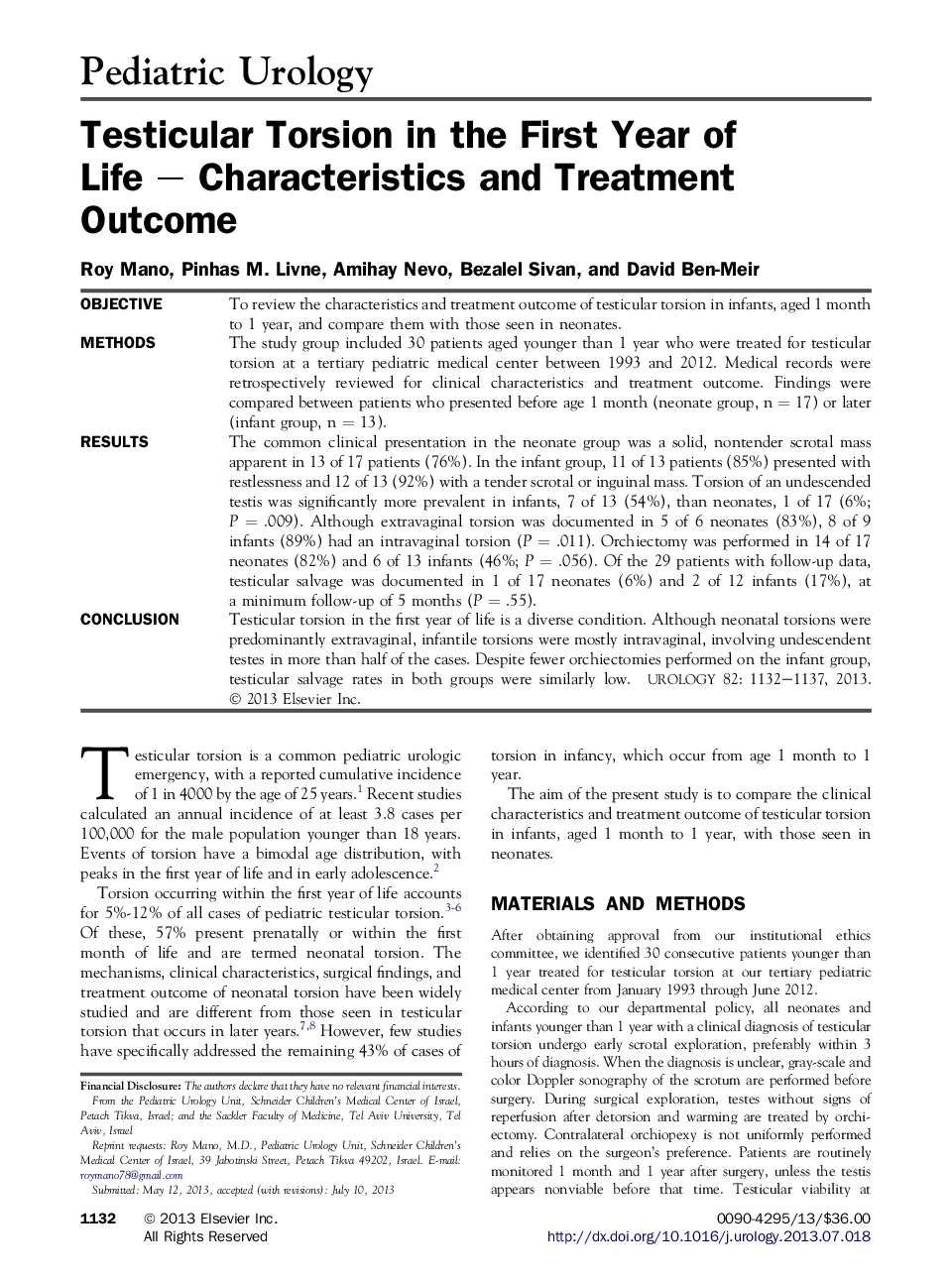| Article ID | Journal | Published Year | Pages | File Type |
|---|---|---|---|---|
| 3899245 | Urology | 2013 | 6 Pages |
ObjectiveTo review the characteristics and treatment outcome of testicular torsion in infants, aged 1 month to 1 year, and compare them with those seen in neonates.MethodsThe study group included 30 patients aged younger than 1 year who were treated for testicular torsion at a tertiary pediatric medical center between 1993 and 2012. Medical records were retrospectively reviewed for clinical characteristics and treatment outcome. Findings were compared between patients who presented before age 1 month (neonate group, n = 17) or later (infant group, n = 13).ResultsThe common clinical presentation in the neonate group was a solid, nontender scrotal mass apparent in 13 of 17 patients (76%). In the infant group, 11 of 13 patients (85%) presented with restlessness and 12 of 13 (92%) with a tender scrotal or inguinal mass. Torsion of an undescended testis was significantly more prevalent in infants, 7 of 13 (54%), than neonates, 1 of 17 (6%; P = .009). Although extravaginal torsion was documented in 5 of 6 neonates (83%), 8 of 9 infants (89%) had an intravaginal torsion (P = .011). Orchiectomy was performed in 14 of 17 neonates (82%) and 6 of 13 infants (46%; P = .056). Of the 29 patients with follow-up data, testicular salvage was documented in 1 of 17 neonates (6%) and 2 of 12 infants (17%), at a minimum follow-up of 5 months (P = .55).ConclusionTesticular torsion in the first year of life is a diverse condition. Although neonatal torsions were predominantly extravaginal, infantile torsions were mostly intravaginal, involving undescendent testes in more than half of the cases. Despite fewer orchiectomies performed on the infant group, testicular salvage rates in both groups were similarly low.
